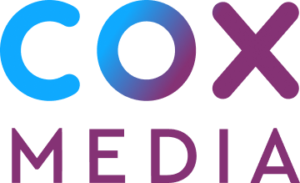Recruiting Checklist: I Have Applicants, Now What?
With more than 10 million job openings available across the United States, many businesses are facing unprecedented challenges in attracting qualified applicants to fill important roles.
The labor shortage may be creating an abundance of options for workers, but it’s putting a serious strain on businesses pouring time and resources into recruiting efforts that continually turn up short. If you’ve found success drumming up applicants to your open positions, you’ve already won half of the battle.
But an applicant pool doesn’t guarantee that you’ll fill your open position with a great prospect. In fact, it doesn’t even guarantee that one of those applicants will accept your offer. In the same way your sales and marketing efforts are only as successful as their ability to drive conversions, your recruiting practices only deliver value when you’re able to take that applicant pool and successfully hire a top candidate to your company.
Faced with new challenges in recruiting top talent, many businesses are in need of a recruiting overhaul. As you audit and upgrade your recruiting methods, use the following checklist to build a bottom-funnel recruiting strategy to convince top talent to join your organization.
Download our handy recruiting checklist and read on for more information.
Checklist: How to Attract and Convert Quality Talent
- Find out what each applicant wants from your job. On some level, every potential hire is looking for the same thing: an income that offers stability. But job applicants may have different ideas of how your job can help them fulfill their goals. Are they seeking industry experience? Promotion opportunities? Flexible work arrangements? If possible, let applicants know you’re open-minded about accommodating these goals. Similarly, identifying barriers to offer acceptance can be very helpful in negotiating with an applicant and winning over top talent. From compensation to professional training to flexible work arrangements, you can use this information to customize your job offer to each applicant you’re eager to hire.
- Ask each applicant about their perception of your company. Your local reputation—as both a business and an employer—could affect your ability to convert the talent you’ve targeted for open positions. Research suggests that brands with a poor reputation may have to shell out 10 percent more in salary, on average, to convince job applicants to choose your business over a competitor. By asking applicants for this feedback, you can get a sense of how your business is viewed on the open job market—and what you might need to do to start winning over more applicants.
- Make sure applicants are well-informed about the job they’re applying for. Job applicants have a lot of options, and their patience for inefficient hiring processes is shorter than ever. Make sure job postings and all other job descriptions and information offer in-depth explanations for applicants. This helps applicants assess their interest in your job, and also saves you time and energy spent chasing applicants who ultimately don’t want to take your job offer.
- Prepare for frank conversations about compensation. Applicants know it’s a job seeker’s market, and they aren’t shy about seeking the strongest compensation packages. To compete with the rest of the job market, consider posting the salary range for open positions, or at least providing transparency about compensation when talking to applicants.
- Be transparent about your hiring process. From the number of rounds of interviews to your anticipated timeline for making a decision, keep applicants informed as you approach your decision.
- Ask applicants what their resume or CV doesn’t reveal about their potential as an employee. Job potential can be hard to represent on a piece of paper. And, if you use AI or other tech tools to vet potential applicants, you might overlook attributes or skill-sets that offer value to your organization—even if that value isn’t necessarily what you originally had in mind.
- Encourage applicants to inform you if they have a competing offer. This gives your business the chance to make a counter-offer and beat out the competition for one of your top candidates.
- Request feedback from applicants about your hiring process. Whether applicants accept your offer or turn it down, this feedback can help you identify friction in the hiring process, or other blind spots that may be impeding your ability to recruit and convert top talent.
- Don’t let hiring anxiety lead you into rushed decisions. Competing offers and hiring deadlines can place pressure on decision-makers to rush a hiring decision before fully evaluating their options. While the active job market may be adding pressure to move quickly, it isn’t worth rushing a decision that hasn’t been fully vetted, all to hire the wrong candidate and waste the time and effort you’ve invested into recruiting.
- Never lose sight of the larger job market. The labor landscape can change quickly. From a tightening job market to higher wages being offered for jobs comparable to the ones you need to fill, recruiting must always consider the job market they’re going up against, and change their practices and recruiting offers to keep pace and retain the interest of applicants.
When it comes to recruiting applicants or convincing them to join your company, digital advertising and marketing can play an integral role in keeping your business top-of-mind and nurturing those leads to increase their odds of converting. Cox Media can help you leverage a digital ad strategy to improve your hiring and employee retention efforts—contact us today to find out how.
Series Progress Tracker





Connect With a Marketing Expert
Connect With Your Local Marketing Expert
You know your business. We know advertising. Together, we can bring your business to more people. Contact a member of our team today. We’d love to help you grow.

